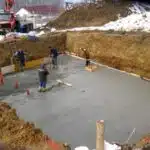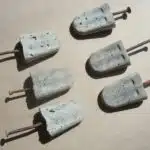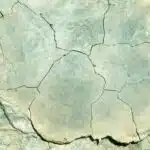As a concrete mixing specialist, understanding the process of mixing concrete is crucial for delivering high-quality projects. Concrete is a versatile and durable material that is widely used in construction, from foundations and walls to pavements and bridges. The strength and durability of concrete depend on various factors, including the right proportion of ingredients and proper mixing techniques.
Mixing concrete involves combining cement, water, aggregates (sand, gravel or crushed stone), and sometimes admixtures to create a homogenous mixture. The process requires careful consideration of the materials’ properties, proportions, and mixing sequence to achieve the desired consistency and strength. In this article, we will explore the essential steps involved in mixing concrete and provide useful tips for achieving excellent results. Whether you are a DIY enthusiast or a professional contractor looking to improve your skills, mastering the art of mixing concrete will help you serve others by delivering quality construction projects that stand the test of time.
Understanding The Components Of Concrete
Concrete is a magnificent material that has been used for centuries in construction, and it’s made up of several components. These components include cement, water, aggregates such as sand and gravel, and sometimes added chemicals. Understanding the role of each component is critical to ensuring the quality and strength of the concrete.
Cement is one of the primary ingredients in concrete, and it plays a significant role in determining its strength. It’s a powdery substance that reacts with water to form a paste that binds all of the aggregates together. This chemical reaction between cement and water creates heat, which helps cement hydrate more quickly. The faster this reaction occurs, the stronger the concrete will be.
Understanding concrete strength is critical to creating a durable structure. Concrete strength refers to how much load or weight it can bear before breaking down or failing. A variety of factors can affect concrete strength, including the mix design (the ratio of cement to water to aggregates), curing conditions (the temperature and humidity during initial setting), and age (concrete continues to gain strength over time). By understanding these factors, you can create a concrete mix that meets your specific strength requirements while ensuring durability for years to come.
To choose the right type of cement for your project, you must consider several factors. The type of cement you use will depend on various factors like weather conditions, construction site location, application method employed etcetera . In subsequent sections we will explore these factors in detail so that you choose the appropriate type of cement for your particular project needs without compromising on quality or safety.
Choosing The Right Type Of Cement
Understanding the components of concrete is crucial in achieving a successful mixing process. However, choosing the right type of cement plays an equally significant role in creating a strong and durable concrete mix. Different types of cement are available for different projects, and selecting the appropriate one is essential in ensuring that the project’s requirements are met.
When choosing cement for a concrete mix, several factors must be taken into consideration. The first factor is the specific project requirement. Different types of cement have varying strengths and curing times, making them suitable for specific applications. For instance, Type I Portland Cement is ideal for general use, while Type III Portland Cement is commonly used for high strength construction work.
The second factor to consider when selecting cement is the environmental conditions where the concrete will be placed. Factors such as temperature fluctuations, humidity levels, and exposure to chemicals or seawater can affect the durability of concrete over time. Therefore, it’s important to choose a type of cement that can withstand these environmental factors and maintain its integrity over time. By taking these factors into consideration when selecting cement for a concrete mix, builders can ensure that their projects meet or exceed expectations.
Moving forward from understanding how to choose the right type of cement, selecting proper aggregates is also crucial in creating an effective concrete mix. Aggregates are materials such as sand, gravel or crushed stone that make up approximately 60-80% of a concrete mixture by volume. Selecting aggregates with appropriate particle size distribution and shape can significantly impact the strength and durability of finished concrete products.
Selecting The Proper Aggregates
When selecting the proper aggregates for your concrete mix, it is important to consider various factors beyond just their availability. The type of aggregate, its shape, grading, and moisture content can all have a significant impact on the strength and durability of the final product.
Aggregate types refer to the materials used in creating your concrete mix. These can range from natural options such as gravel and sand, to crushed stone or recycled materials like crushed concrete. Each type has its own unique characteristics that will affect how well it performs in a given application.
Aggregate shape is another important factor to consider. Round or smooth aggregates are typically easier to work with and will produce a smoother finish, while angular or rougher shaped aggregates may provide better bonding properties within the mix.
To ensure that your concrete mix achieves optimal performance, you should also consider aggregate grading and moisture content. Gradation refers to the size distribution of particles within the aggregate, which can impact how well they pack together in the mix. Moisture content, on the other hand, can affect workability and curing time.
- It’s important to choose high-quality aggregates that have been properly graded.
- Using overly wet or dry aggregates can negatively impact both workability and final strength.
- Rounded aggregates tend to be more aesthetically pleasing but may not bind together as well during curing.
- Angular aggregates require less water for mixing but may require more workability additives.
By taking into account all of these factors when selecting your aggregates, you can create a strong and durable concrete mix that meets all of your project needs. In the next section, we’ll discuss how to measure water for your concrete mix in order to further optimize its performance.
Measuring Water For Concrete
After selecting the proper aggregates, it is important to calculate the ratios of these materials in order to create a strong and durable concrete mix. The most important ratio to consider is the water cement ratio, which determines the amount of water needed to hydrate and activate the cement particles. This ratio must be carefully calculated as adding too much water can weaken the final product, while not enough water can make the mixture difficult to work with.
Calculating ratios involves determining how much of each material should be used in relation to one another. For example, a common ratio for concrete is 1:2:3, meaning one part cement, two parts sand, and three parts aggregate. However, this ratio can vary depending on factors such as the type of project and desired strength of the finished product. It is important to consult with a specialist or reference materials when determining appropriate ratios.
The importance of the water cement ratio cannot be overstated. While it may be tempting to add more water for easier mixing or spreading, doing so can result in weakened concrete that is prone to cracking and damage over time. Instead, precision in measuring water for concrete is key in creating a strong and long-lasting final product.
| Pros | Cons |
|---|---|
| Durable | Time-consuming process |
| Versatile | Requires specialized equipment |
| Strong | High cost compared with other building materials |
| Resistant to fire and weathering | Can crack if not properly mixed |
| Sustainable option | Requires skilled labor for proper mixing |
Moving forward, adding admixtures to concrete can enhance its properties even further. By incorporating specialty additives into the mix, it is possible to achieve specific qualities such as increased strength or waterproofing capabilities. Understanding how different admixtures work and their effects on concrete is essential in creating mixes that meet project requirements.
Adding Admixtures To Concrete
- Admixtures are materials added to concrete during mixing in order to modify the properties of concrete for a desired purpose.
- The types of admixtures used depend on the application and desired properties of the concrete.
- The proportioning of admixtures must be done carefully to ensure the desired properties are achieved without compromising the integrity of the concrete.
- Careful testing and evaluation of the admixtures are necessary to ensure the best possible outcome in the concrete mix.
Types Of Admixtures
As a concrete mixing specialist, it is essential to understand the benefits of admixtures and their common types used in concrete. Admixtures are added to alter the properties of freshly mixed concrete and enhance its performance. These are chemical substances that are added in small quantities, which can alter the workability, strength, durability, or setting time of concrete.
The benefits of using admixtures are numerous. Firstly, they improve the workability and consistency of the concrete mix. Secondly, they help in reducing water content while maintaining the desired slump for ease of placement. Thirdly, admixtures can significantly increase the strength and durability of concrete by decreasing permeability and preventing corrosion. Lastly, they offer cost savings by reducing cement content and allowing for faster construction.
There are several types of admixtures used in concrete mixes today. The most common ones include water-reducing admixtures (WRAs), air-entraining admixtures (AEAs), retarding admixtures (RAs), accelerating admixtures (AAs), and superplasticizers (SPs). Each type has specific functions depending on its chemical composition and application requirements. Understanding these different types is crucial in achieving optimal results when mixing concrete for any project.
Proportioning Admixtures
As a concrete mixing specialist, it is crucial to understand the different types of admixtures used in concrete mixes. These chemical substances are added in small quantities to alter the properties of freshly mixed concrete and enhance its performance. Water-reducing admixtures, air-entraining admixtures, retarding admixtures, accelerating admixtures, and superplasticizers are some of the most common types of admixtures used in concrete mixes today. Each type has specific functions depending on its chemical composition and application requirements.
While adding admixtures to concrete, proportioning these substances is essential for achieving optimal results. Proportioning admixtures involves determining the right amount of each type of admixture to be added based on the desired properties and characteristics of the final product. This process requires extensive knowledge of each type of admixture’s chemical composition and their effects on fresh and hardened concrete.
Proportioning admixtures offers several benefits when adding them to concrete mixes. Firstly, it ensures that the right amount of each type of admixture is added to achieve the desired properties and characteristics. Secondly, it helps in reducing costs by avoiding overuse or underuse of these substances. Thirdly, proper proportioning helps in maintaining consistency throughout the mixing process, ensuring that every batch produced meets specific quality standards. As a result, proportioning admixtures is an indispensable aspect of using these chemical substances to improve concrete mix performance effectively.
Preparing The Concrete Mixer
As a concrete mixing specialist, I understand the importance of preparing the equipment before mixing concrete. Cleaning the mixer is crucial to ensure that there is no dirt or debris that might affect the quality of the mixture. To do this, use a high-pressure hose to clean out any remaining material from previous mixes. Allow time for the mixer to dry completely before using it.
Setting up the equipment involves checking that all parts are in good working condition. Inspect the blades and other components to ensure they are free from damage. Check that bolts and nuts are tight, especially those holding the drum and motor in place. Additionally, check if electrical connections are secure and undamaged.
To help you enjoy setting up your equipment, here are four tips:
- Always wear appropriate protective gear such as gloves and goggles.
- Make sure you have all necessary tools nearby before starting.
- Set up your equipment on level ground to prevent accidents.
- Ask for help if needed, especially when moving heavy equipment.
By following these tips, you can set up your equipment safely and efficiently. Once everything is ready, it’s time to move on to loading the mixer with ingredients without delay.
Loading The Mixer With Ingredients
Accurate measurements of materials are essential for successful concrete mixing. The proper amount of water must be added to the mixer to ensure that the concrete is workable. A variety of aggregates can be included in the mix, and should be added in the proper proportions to obtain a successful mix. Automated systems can be used to accurately measure and control the amounts of each material added to the mixer. The aggregate should be added to the mixer slowly to minimize segregation issues. The amount of water added should be constantly monitored to ensure that the consistency of the concrete remains optimal.
Measuring Materials
When it comes to mixing concrete, measuring materials is an essential step in ensuring that the final product has the desired concrete strength. Mixing ratios play a crucial role in determining the appropriate amount of each material to be used. As a concrete mixing specialist, I understand the importance of accurate measurement and strive to ensure that every mixture is precisely measured.
To achieve the correct mixing ratio, we typically use a volumetric measurement system. This system involves measuring each material by volume rather than weight. The most commonly used measurement for cement is bags, while sand and aggregate are measured in cubic feet or meters. These measurements are then combined with water to create a consistent mixture.
When measuring materials for concrete mixing, precision is key. Even small deviations from the correct mixing ratios can significantly impact the final product’s strength and durability. Therefore, as a concrete mixing specialist, I take great care to ensure that all measurements are exact and that each batch is thoroughly mixed to achieve optimal results. By taking these measures, we can ensure that our customers receive high-quality products that meet their specific needs without fail.
Adding Water
Loading the mixer with ingredients is an essential step in the process of mixing concrete. However, it is not just a matter of combining materials. Adding water to the mixture plays a crucial role in determining the final product’s strength and durability. As a concrete mixing specialist, I understand the importance of hydration and strive to ensure that each batch receives the appropriate amount of water.
Water is necessary for cement hydration, which is the chemical process that binds cement and aggregates together. Without sufficient water, cement particles cannot be adequately activated, resulting in weak or brittle concrete. On the other hand, too much water can lead to potential issues such as segregation or bleeding. These problems can weaken concrete and compromise its overall quality.
Therefore, when adding water to the mixer, it is crucial to measure accurately and add it gradually while monitoring consistency carefully. As a concrete mixing specialist, I take great care to ensure that each batch receives precisely what it needs for optimal results. By doing so, we can guarantee our customers high-quality products that meet their specific requirements and exceed their expectations.
Adding Aggregate
Loading the mixer with ingredients is just one step in the process of mixing concrete. Another essential element that contributes to the final product’s strength and durability is adding aggregates. Aggregates are a critical component of concrete, and their size and type significantly impact the material’s properties. As a concrete mixing specialist, I understand the importance of selecting appropriate types and sizes of aggregate for optimal results.
The size of aggregate used in concrete varies depending on the intended use and application. Small sized aggregates such as sand or fines are suitable for creating a smooth finish on surfaces like walls or floors. On the other hand, larger-sized aggregates like gravel or crushed stone are ideal for making durable foundations or structural elements such as columns. As a specialist, I ensure that each batch receives precisely what it needs regarding aggregate size to meet specific requirements and exceed expectations.
In addition to considering aggregate size, we also must select appropriate types based on their physical properties. Coarse aggregates like gravel provide strength to concrete while fine aggregates such as sand improve workability and finishability. We can also use specialty aggregates like recycled materials or lightweight options for specific applications where lighter weight or environmental friendliness is desired. By carefully selecting aggregate types and sizes when loading the mixer with ingredients, we can create high-quality products that meet our customer’s unique needs.
Mixing The Concrete Ingredients
To mix concrete, it is important to have all the necessary ingredients and equipment on hand. The three main ingredients of concrete are cement, sand, and aggregate. These ingredients must be mixed in specific proportions to achieve the desired strength and consistency of the final product. Common mistakes made during the mixing process include adding too much or too little water, not measuring ingredients accurately, and not properly mixing the ingredients together.
To begin mixing the concrete ingredients, start by adding half of the required amount of water to a mixer or mixing container. Next, add the cement and mix until it is evenly distributed throughout the water. Then, add the sand and aggregate one at a time while continuing to mix. It is important to add these ingredients slowly to ensure that they are evenly distributed throughout the mixture.
The equipment needed for mixing concrete includes a mixer or mixing container, a shovel or hoe for mixing, and a water source. It is important to use proper safety gear such as gloves and eye protection when handling these materials. Once all of the ingredients are added, continue mixing until everything is evenly distributed and there are no clumps present. In our next section we will discuss how to check for consistency in your mixed concrete before pouring it.
| Cement | Sand | Aggregate |
|---|---|---|
| 1 part | 2 parts | 3 parts |
This simple ratio table demonstrates how much of each ingredient should be used when making concrete. By following this ratio you can ensure that your mixture will have optimal strength and durability. Additionally, measuring your ingredients with precision using a scale will also help guarantee that your final product turns out as expected.
Next up we will discuss how checking for consistency in your mixed concrete can make all the difference in creating a long-lasting structure that will stand up against wear-and-tear over time!
Checking The Consistency Of The Concrete
After mixing the concrete ingredients, it is crucial to check the consistency of the mixture before pouring it. For instance, if your project requires a stronger concrete mix, you may need to adjust the amount of cement and water used. On the other hand, if your project requires more workability, you may need to add more water than usual.
Testing strength is an essential step in ensuring that the concrete mix meets your project’s requirements. To test the strength of the mix, pour a sample into a cylindrical mold and allow it to cure for at least 28 days. Once cured, apply pressure to the sample using a hydraulic press until it breaks. The force required to break the sample indicates its compressive strength.
Adjusting water content is another crucial step in achieving a consistent and workable concrete mix. If you notice that your mixture is too dry or stiff, gradually add small amounts of water until you attain the desired consistency. Conversely, if your mixture appears too wet or runny, slowly add cement or sand until you achieve the desired texture.
To ensure that your concrete mix achieves optimal results for your project, keep in mind these key takeaways:
- Testing strength guarantees that your concrete meets its intended purpose.
- Adjusting water content can help achieve better workability.
- Consistency leads to uniformity in final product quality.
- Following proper mixing techniques helps reduce waste and saves time and money.
With this knowledge in mind, adjusting your concrete mix accordingly should be simple and effective for any DIY or professional building project.
Adjusting The Concrete Mix
Achieving the right consistency of concrete is crucial for its strength and durability. Adding too much water to the mix will weaken the concrete, while adding too little will make it difficult to work with. Adjusting the water content is one way to modify the consistency of your concrete mix.
To adjust the water content, start by reducing or increasing the amount of water in small increments. Keep in mind that a change in water content can also affect other elements of your mix such as cement and aggregate. Therefore, it’s essential to keep track of any changes you make and their effect on the overall mix.
Modifying aggregate size can also impact the final result of your concrete mix. Using larger aggregates will result in a more robust concrete but may make it more challenging to work with if you’re pouring into tight spaces or using molds. Conversely, smaller aggregates will result in a smoother finish but may be less durable over time. It’s essential to consider the intended use of your concrete when deciding on aggregate size adjustments.
In summary, adjusting your water content and aggregate size are two ways to modify your concrete mix depending on its intended use. Small adjustments are recommended when making changes to avoid compromising other elements’ balance in your mixture. In our next section, we’ll discuss how to pour your adjusted mixture correctly without affecting its quality.
Pouring The Concrete
To successfully pour concrete, it is important to have the right tools and follow proper techniques. Pouring concrete can be a daunting task but with the right preparation and execution, you can achieve a smooth and level surface. Before starting, make sure you have all necessary equipment including a wheelbarrow, shovel, trowel, and float.
When preparing to pour the concrete, it is crucial to prevent cracking from occurring. One way to do this is by ensuring that the ground beneath the concrete is level and compacted. Additionally, using reinforcing materials like rebar or wire mesh can help strengthen the structure of the concrete and prevent cracks from forming.
Tips for preventing cracks in concrete:
- Use reinforcing materials like rebar or wire mesh
- Ensure that the ground beneath the concrete is level and compacted
- Control moisture levels during curing process
- Avoid overworking or overmixing the concrete
- Use proper joint spacing
With these tips in mind, start pouring the concrete evenly into your formwork. Work quickly but carefully as you fill each section of your formwork. Once complete, use your float to smooth out any bumps or inconsistencies in your surface. With proper technique and attention to detail during pouring, you can achieve a beautiful finished product that will last for years to come.
Transition: Now that you’ve successfully poured your concrete surface, it’s time to move on to leveling and smoothing it out for a polished look.
Leveling And Smoothing The Concrete Surface
After pouring the concrete, it is important to level and smooth the surface. This is crucial to ensure that the concrete is even and stable, and will not crack or shift over time. To do this, you will need a few tools including a bull float, a hand float, and a trowel.
Using the bull float, start at one end of the slab and work your way towards the other end. This tool helps to flatten out any high spots and fills in any low spots. Once you have finished with the bull float, switch to the hand float. Use this tool to create a smooth surface by working it back and forth across the concrete. Finally, use a trowel around the edges of the slab to create smooth edges.
One common mistake that people make when leveling and smoothing concrete is not taking enough time to do it properly. It’s important to be patient and take your time so that you can achieve an even surface. Another mistake is not using enough water when finishing off the surface with a trowel. This can result in a rough finish which may cause problems down the line if left untreated.
Transition: Now that you have leveled and smoothed out your concrete slab, it’s time to move onto curing it properly.
Curing The Concrete
Proper curing is a critical step in the process of making high-quality concrete. It involves keeping the concrete moist and at a stable temperature for an extended period. The curing process allows the concrete to continue to hydrate and gain strength, which is essential for long-lasting structures.
Concrete finishing techniques are closely linked to proper curing. When the concrete is finished correctly, it will have fewer surface defects, which can lead to increased durability and reduced maintenance costs over time. However, if the curing process is not done correctly, even well-finished concrete can be prone to cracking and other problems that can compromise its strength and longevity.
To ensure proper curing, it is essential to follow a few key steps. First, keep the surface of the concrete moist by using misting or covering techniques. Second, maintain a consistent temperature within the curing area by using insulation or heating/cooling equipment as needed. Finally, allow enough time for the concrete to cure fully before exposing it to heavy loads or other stresses.
- Key factors in proper curing:
- Moisture: Keep the surface of the concrete moist through misting or covering.
- Temperature: Maintain consistent temperatures within the curing area.
- Time: Allow sufficient time for full curing before exposing to heavy loads or stresses.
In summary, proper curing is essential for ensuring that your concrete has maximum strength and durability over time. By following these simple steps and paying close attention to key factors such as moisture levels, temperature control, and curing timeframes, you can help ensure that your next project is built on a solid foundation that will last for years to come. In our next section, we will discuss finishing techniques used to prepare your cured concrete surface for use without damaging it further.
Finishing The Concrete Surface
After the concrete has been poured and leveled, it is time to finish the surface. This step is important because it will affect how the concrete looks and performs over time. One way to finish the surface is by applying sealant. Sealant helps protect the concrete from water damage, stains, and other types of wear and tear. It also gives the surface a glossy or matte appearance depending on the type of sealant used.
Another way to finish the surface is by creating textured finishes. This can be done by using tools such as brooms, trowels, or stamps to create patterns or designs in the concrete. Textured finishes not only add visual interest but also provide traction which can be helpful for outdoor surfaces such as driveways or walkways.
It is important to note that finishing techniques should be performed carefully and with precision to avoid damaging the concrete surface. In addition, proper curing time should be allowed before any finishing techniques are applied. Once finished, maintaining the concrete surface is crucial for its longevity and performance.
Maintaining The Concrete
One might think that once the concrete is mixed and poured, there is no need for any further attention. However, this is far from true. In fact, it is crucial to maintain and care for the concrete to ensure its longevity and durability. Without proper maintenance, even the strongest mix can develop cracks or become damaged over time.
To prevent this from happening, one of the most important steps in maintaining concrete is sealing it properly. Concrete sealing serves as a protective barrier against elements such as water, oil, and chemicals that can seep through the surface and cause damage. By applying a sealant every few years, you can help prolong the life of your concrete and prevent costly repairs down the line.
Another essential aspect of maintaining your concrete is preventing cracks from forming. This can be achieved by minimizing stress on the surface of the concrete. For example, avoid parking heavy vehicles on it or placing heavy objects on its surface for extended periods. Additionally, ensure proper drainage around your concrete surfaces to avoid standing water which can cause cracking due to freeze-thaw cycles.
In addition to sealing and stress prevention, regular cleaning is also crucial in maintaining your concrete’s appearance and functionality. A simple power washing or scrubbing with soap and water can remove dirt buildup and stains that can make your concrete look worn out while attracting more dirt particles. By following these three maintenance tips – sealing your concrete regularly, preventing stress on its surface, and keeping it clean – you’ll be able to enjoy strong and durable concrete surfaces for years to come without worrying about cracks or damages!
Conclusion
To conclude, mixing concrete is a complex process that requires attention to detail and knowledge of the materials involved. As a concrete mixing specialist, I have seen firsthand the importance of understanding the components of concrete and selecting the right type of cement and aggregates for each project. The proper measurement of water and addition of admixtures can also greatly impact the strength and durability of the final product.
One metaphor that can be used to illustrate this process is that of baking a cake. Just as a chef carefully measures ingredients and follows a specific recipe to create a delicious dessert, so too must a concrete mixer carefully measure and mix materials to create a strong foundation or structure. And just as over- or under-cooking a cake can lead to an unsatisfactory result, so too can incorrect mixing or curing techniques lead to weakened or cracked concrete.
In order to ensure the longevity and stability of any construction project, it is crucial to follow proper concrete mixing techniques from start to finish. By understanding the science behind the mix, selecting high-quality materials, and following best practices for measuring, adding admixtures, leveling, smoothing, curing, finishing and maintaining the surface; one can create durable structures that will last for years to come.
Image Credits
- “Concrete Housing Construction in Chile” by Concrete Forms (featured)





























